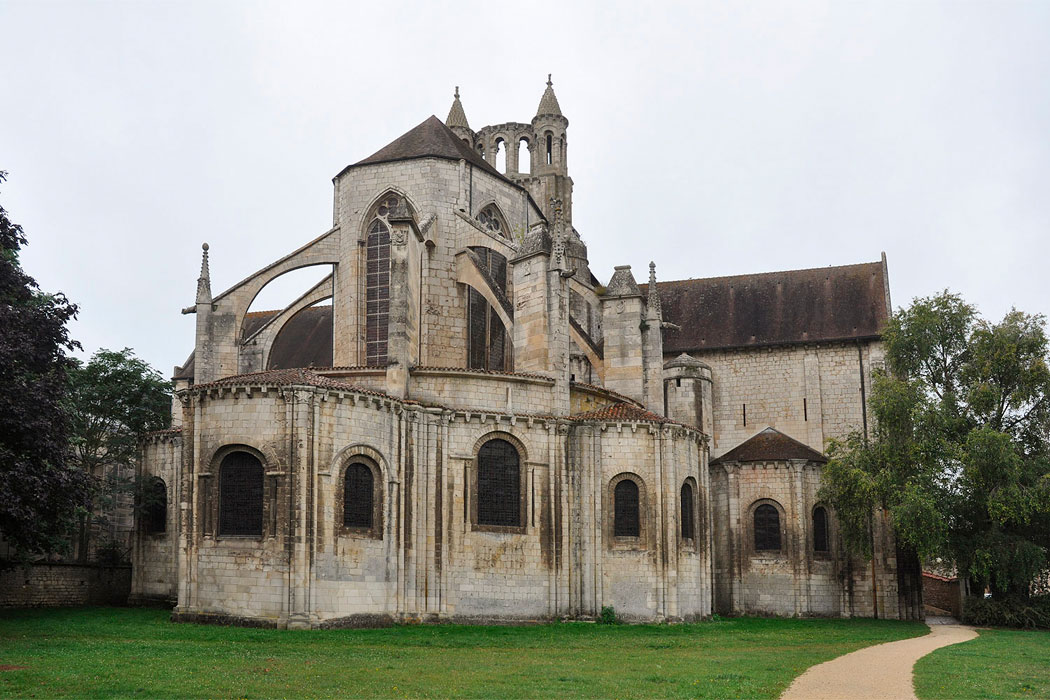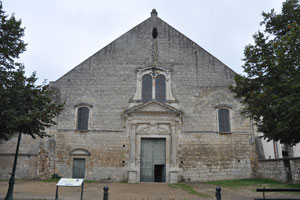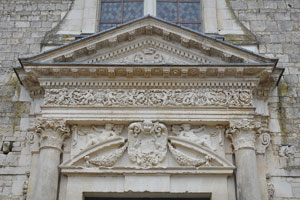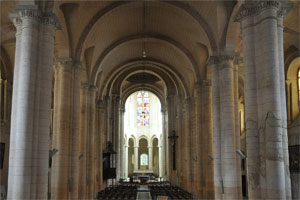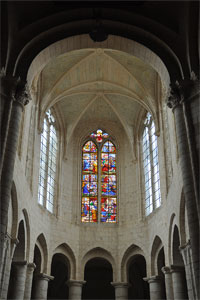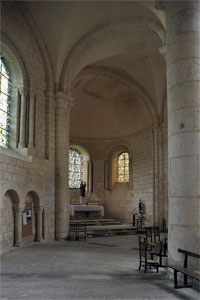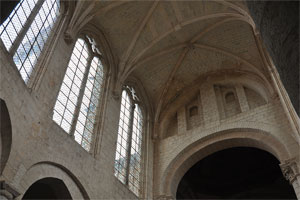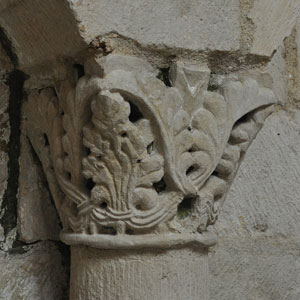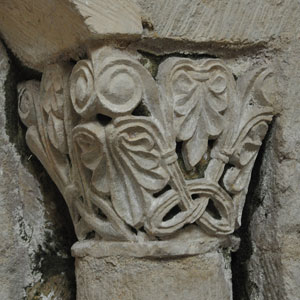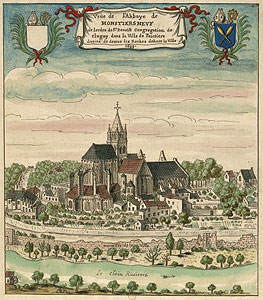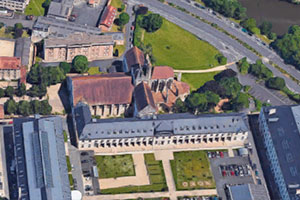The Abbey of Saint-Jean de Montierneuf was founded by Count William VI of Poitiers (William VIII of Aquitaine, 1024–1086) and his wife Aldearde of Burgundy (†1104) at an undetermined date. Construction appears to have begun in 1069, and it is likely that the initiative was encouraged—or even imposed—by Pope Gregory VII due to the couple’s incestuous marriage; the foundation itself may have taken place later, possibly around 1076.
In 1077, the founder granted the abbey certain privileges and endowed it with numerous properties to ensure its sustainability. That same year, Pope Gregory VII placed the monastery under the authority of Cluny and its abbot Hugh, with the agreement of the bishop of Poitiers. The abbey became known as Monasterium Novum to distinguish it from the older abbey of Saint-Cyprien. The first abbot was Guy of Cluny, who took office in 1082. In 1086, the monastery absorbed the canonry of Saint-Nicolas of Poitiers, founded in the mid-11th century by Agnes of Burgundy, William VI’s mother.
The founder died in 1086 and was buried in the abbey church. In 1096, Pope Urban II solemnly consecrated the abbey church, which had been completed by William VII, the founder’s son. In the following years, the abbey’s influence grew thanks to privileges and donations. Among its holdings was the priory of Puy-Notre-Dame (Maine-et-Loire), which was elevated to a collegiate church in 1478.
The abbey was attacked and pillaged during the Wars of Religion in 1562 and 1569, resulting in the destruction of both movable and immovable property. Reconstruction works dragged on, resulting in a rebuilt church that was smaller and significantly altered from the original Romanesque structure. In 1621, the monastery was ordered to join the Congregation of Saint-Maur, but the monks opposed the reform, and the affiliation never came into effect. In 1643, the bell tower and part of the nave collapsed, leading to further rebuilding. The abbey was dissolved during the Revolution in 1789 and later served various purposes, including as a barracks and warehouse.
The church survives and now serves as a parish church. It reflects the 17th-century restoration carried out on Romanesque foundations. It is a three-aisled structure with eight bays and a transept. The choir ends in a large central apse surrounded by an ambulatory, which opens onto three radial chapels. The transept also contains two additional chapels, one on each arm. A number of capitals are preserved, some dating from 19th-century restoration efforts. The façade is from the 17th century.
- BEAUNIER, Dom (1910). Abbayes et prieurés de l'ancienne France. Vol. 3: Auch, Bordeaux. Abbaye de Ligugé
- CAMUS, Marie-Thérèse (1978). Un chevet à déambulatoire et chapelles rayonnantes à Poitiers vers 1075 : Saint-Jean-de-Montierneuf. Cahiers de civilisation médiévale, núm. 84
- CHERGÉ, M. de (1845). Mémoire historique sur l'abbaye de Montierneuf de Poitiers. Mémoires de la Société des antiquaires de l'Ouest. Poitiers / Paris: Oudin / Derache
- OBERSTE, Jörg (2012). Les Clunisiens et l’espace urbain en France. Mélanges de l’École française de Rome -Moyen Âge, 124-1
- PICTAVE, Jehan (1909). Poitiers. Ses monuments, son histoire. Poitiers: Courrier
- SAINT-MAUR, Congregació de (1720). Gallia Christiana in provincias ecclesiasticas distributa. Vol. 2. París: Typographia Regia
